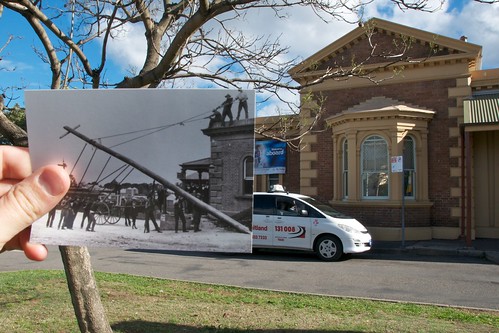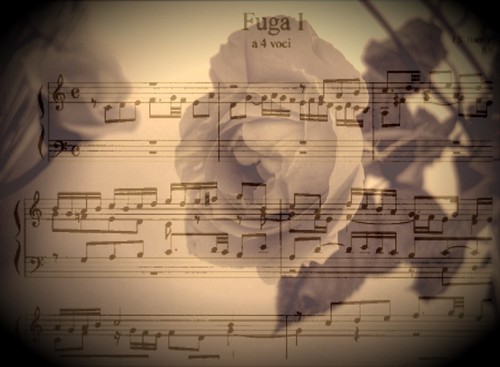Just some of the interesting items we have found online.
For WordPress bloggers
We found this great Editorial Calendar plugin. It’s a very useful tool as we can see our schedule of posts at a glance and organise the publication of posts so we don’t post too many or too few at any given time.
For photography and history lovers
Join the fun, new group at Flickr from the US National Archives. Basically, find an archival photo in their collection, print it out. Head out to that location and take a photo of it – with the print in front of the camera to create “augmented reality” and then upload it to their Flickr group
UPDATE: See the ABC News story of a Hunter/Newcastle photographer who has been doing the same thing with old photos. He has also ‘re-photographed’ one of our images.

Who’d be interested in an Australian version of this?
On a musical high
A lost flute concerto by the composer Vivaldi has been discovered at the National Archives of Scotland…Southampton University research fellow Andrew Woolley found the piece among the Marquesses of Lothian’s family papers at the archives in Edinburgh.
Only the Music Remains
Continuing with the musical theme:
Back before TV was beamed into the nation’s living rooms every night, the main form of entertainment was music. Helen Harvey looks at some long- forgotten Taranaki composers.
There was no internet, so people couldn’t have their say by tweeting, blogging or going on Facebook. There was no talkback radio to ring up or TV programme to text in to.
So people wrote songs.
The Smithsonian responds to the perennial question “but your whole collection is digitised, right?”
take for example our wonderful cold storage vault holding about three million images. Let’s say that we digitize 5,000 images a year. Five thousand is a lot (about 100 images per week, or 20 images per day; about 20 minutes per image that includes handling the original negative, adding catalog data (metadata) and post-processing the image from a negative to a positive and doing minimal sharpening), but at that rate it would take about 600 years to digitize that collection.
New Archive of Edinburgh Life During First World War
A new archive of locally sourced photographs, posters and documents will be launched later today revealing stories of Edinburgh’s involvement in the first world war – some being made public for the first time.
The online collection, titled Edinburgh’s War, includes accounts of Girl Guides helping M15, Serbian refugee children being educated at George Heriot’s School, and domestic science teachers from James Gillespie’s School teaching soldiers how to cook.
Podcast: Citizen Voices in Government Archives
Within the context of upcoming elections this podcast from Vermont Public Radio considers the role of the modern archive and the importance of documenting citizens interactions with government.
We talk with two archival experts, Terry Cook and Wendy Smith, from the University of Manitoba, who are in Vermont studying how state archives are managed and preserved. Their interests focus on the role archives can have in bolstering democratic societies.


Liz Pidgeon says:
Love the concept of identifying historical images which can be recreated in front of the modern view. HistoryPin is a website that also does this. http://www.historypin.com/ There is limited Australian content but one worth revisiting as it grows.
pellethepoet says:
That’s a pretty cool way of re-photographing historical images. I wonder if they were inspired by Ben Heine’s hugely popular Pencil Vs Camera series – http://www.flickr.com/photos/benheine/4524197834/ – or Kenneth Josephon’s iconic Images within Images series?
I first saw the method used with an old photograph and location shot here – http://www.flickr.com/photos/45717052@N00/4730806890/
Anthea Brown says:
@Liz Pidgeon thanks for including that link; I remember the site when it was first launched. I’ll have to re-visit, it sounds like there is more content now available.
@pellethepoet wow, I haven’t seen this done with a pencil sketch before. Isn’t it amazing!